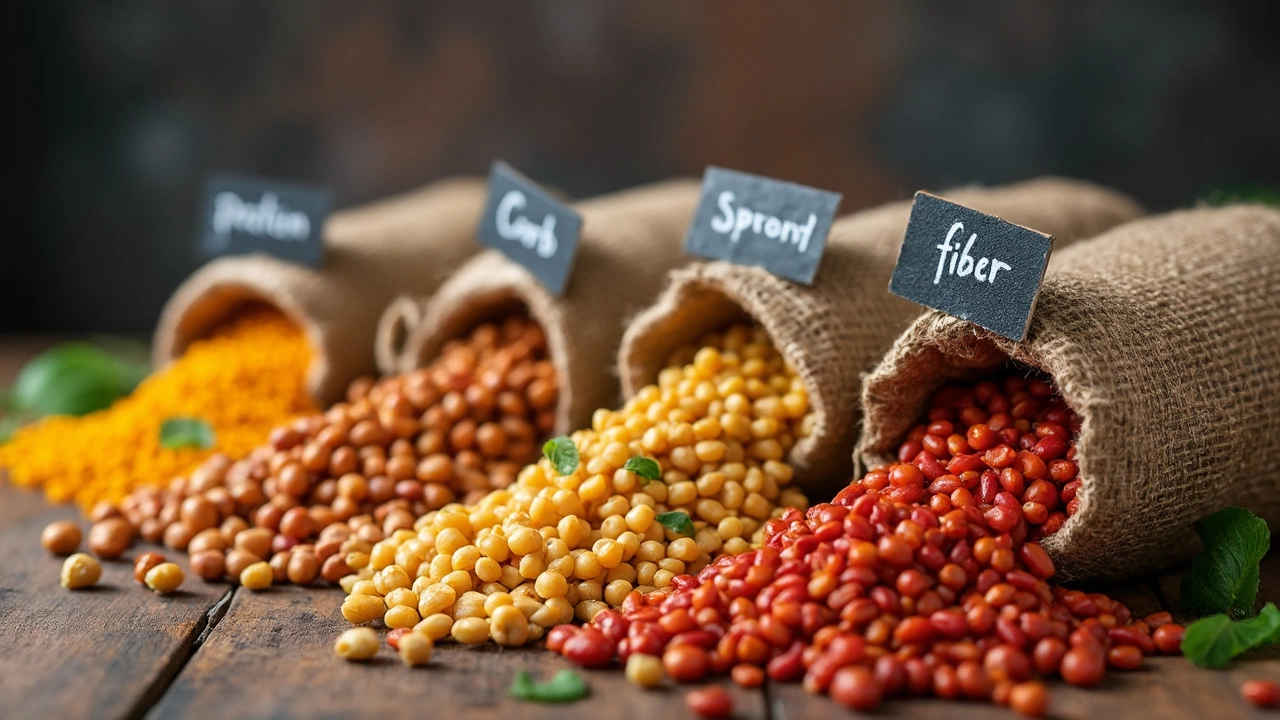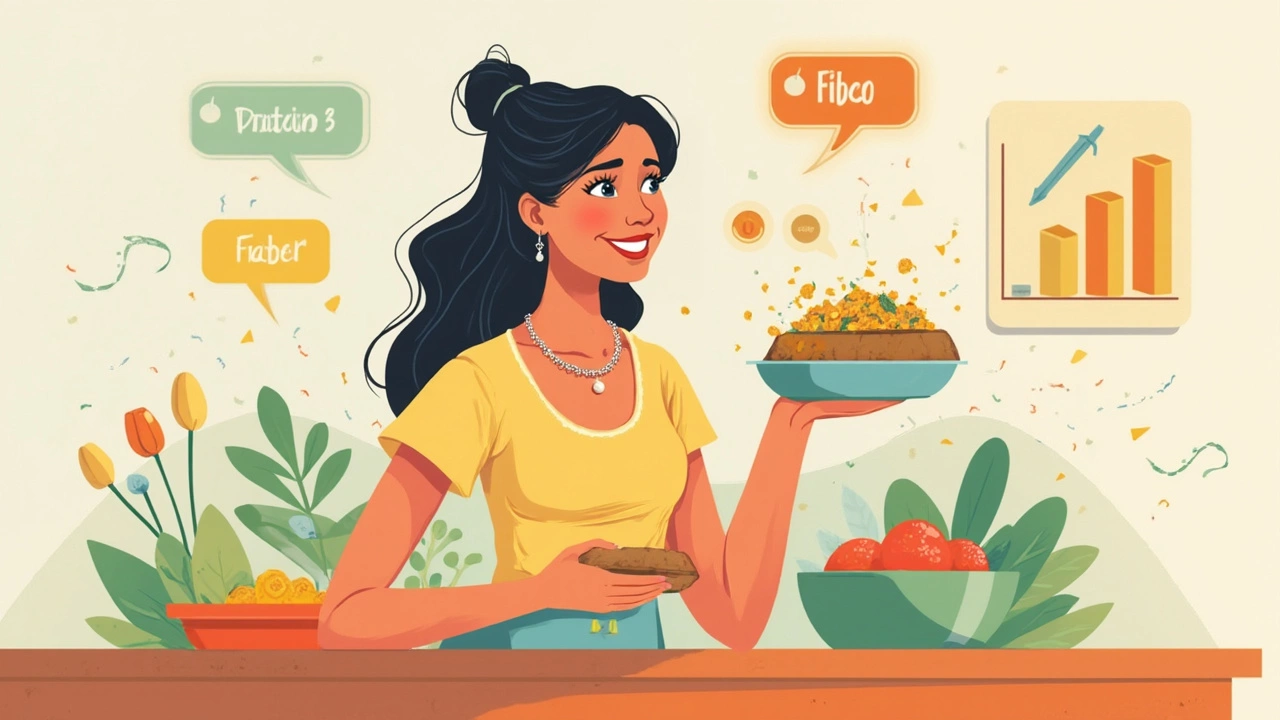Picture this: you’re staring down at a cozy bowl of dal, golden and steaming, with rice or roti on the side. It tastes homey and filling. But halfway through the meal, you wonder quietly—wait, is dal supposed to be a carbohydrate-heavy food, or is it my main protein? This question trips up everyone, from busy moms planning meals to fitness-lovers calculating macros. It’s not as obvious as it first seems, and honestly, the answer might surprise you.
Understanding What Dal Really Is
Let’s get the basics straight. Dal isn’t just one thing. “Dal” is a catch-all name for split pulses—think lentils, chickpeas, mung beans, and all their split cousins found in Indian kitchens. They come in orange, yellow, green, brown, even black. Each type has its own fan club and unique taste, but they share more than just color.
The tricky part: dal pulls double duty. It’s got both protein and carbs, but the balance depends on the type you scoop into your pot. Most dals provide about 22-26% protein by dry weight—more than rice or wheat—but not as much as animal meat, which can reach 30% or more. The rest of dal’s dry weight is mainly carbs, with some fiber and a sprinkle of fat.
Here’s a quick look at the nutrition in 100 grams of raw toor dal (split pigeon pea), one of the most common types at Indian grocery stores:
| Nutrient | Amount (per 100g) |
|---|---|
| Calories | 343 |
| Protein | 22g |
| Carbohydrates | 58g |
| Sugar | 3g |
| Fiber | 15g |
| Fat | 1.7g |
So, you can see dal is rich in both carbs and protein, but carbs slightly edge out protein by the numbers—at least in toor dal. You’ll notice similar ratios for most other dals, though some—like moong or masoor—can shift the protein a bit higher. Dal is often dubbed as the “poor man’s meat” across South Asia for exactly this reason: it’s a serious protein contender, but you do get a solid dose of carbs too.
The Protein Punch: How Dal Stacks Up
Let’s talk protein directly. Anyone who follows a vegetarian diet knows dal is the hero of the protein game. But compared to animal protein—chicken, fish, or eggs—dal doesn’t quite hit the mark gram for gram. For example, 100 grams of cooked chicken breast is around 31 grams of protein, while 100 grams of cooked dal (after boiling) drops to about 7-9 grams. That’s because dal swells up and absorbs water, making it less dense in protein once cooked.
However, dal has one trick that meat doesn’t: fiber. Those 15 grams of fiber per 100 grams raw help slow sugar spikes and keep you full longer. Fiber isn’t a protein, but it makes dal more filling and is good news for your gut.
Here’s where it gets interesting. The amino acids in dal aren’t “complete”—they lack all the essential amino acids you’d get from animal foods. But if you pair dal with grains, like rice or wheat, their amino acids complement each other. That’s the real magic behind classic meals like dal-chawal and dal-roti found in Indian homes. Together, they form a complete protein, giving your body what it needs to build muscle, hair, skin, and more.
Some quick tips on getting the most protein out of dal:
- Mix different types of dals—like moong, masoor, and urad—in one recipe.
- Pair dal with brown rice or millet.
- Add in a spoon of hemp or chia seeds if you’re counting protein.

What About the Carbs in Dal?
Still not sure if dal is more of a carb? Here’s the deal: most of the calories in dal come from carbohydrates. But it’s not white-flour or sugary-carbs—it’s complex carbs, mostly starch, and a healthy helping of fiber.
The fiber means dal digests slowly. You avoid sugar highs and crashes, making dal awesome for people keeping an eye on blood sugar, including those with diabetes. The glycemic index for most dals falls in the low-to-moderate range (30-45 for most), especially if cooked without too much fat and served with whole grains.
Check this out—a 2018 Indian study split diabetic patients into three groups. Everyone ate the same calories, but only one group swapped some rice for dal. That group had steadier blood sugar and reported fewer cravings. Turns out, the combo of protein and fiber from dal is a smart move.
Worried about carbs wrecking your diet? Remember that not all carbs are the same. Dal’s carbs also come loaded with iron, magnesium, B-vitamins, zinc, and potassium, which you don’t get from white bread or processed noodles.
- For those on a strict low-carb diet, you may want to watch portions. Try using sprouted dals for higher protein and slighter lower carbs.
- If you aim for slow energy and gut health, dal's the answer. The resistant starch in dal even feeds your good gut bacteria, acting like a natural probiotic booster.
The Healthy Way to Eat Dal
People mess up dal’s “healthy food” profile without realizing it. The way it’s cooked and served will totally change how much protein, carb, and goodness you get.
Avoid drowning your dal in cream, butter, or tons of oil. Classic restaurant dal makhani, for example, can sneak in more fat than protein if you’re not careful.
- For protein power, choose dal dishes like sambar, simple moong dal tadka, or plain masoor dal, cooked with water, turmeric, and light tempering.
- Rinse dal thoroughly. Soaking for 30 minutes to two hours does wonders for digestibility and can slightly boost available protein.
- Add plenty of spices—turmeric, cumin, garlic—not just for flavor but for their anti-inflammatory and digestive perks.
- If you blend cooked dal smooth, pair it with chunky veggies for texture and a fiber punch.
- Combine half a plate of dal with a quarter plate of brown rice and a big helping of veggies.
- Heap chopped coriander or a squeeze of lemon on top.
- Use dal water (the cooking liquid) in soups to capture leftover nutrients.

Surprising Benefits and Final Thoughts
Beyond macros, dal comes with serious health bonuses. If there’s one food I always push for in any kitchen, it’s pulses. Why? Heart health for starters—regular dal eaters tend to have better cholesterol numbers, likely thanks to that strong combo of fiber, potassium, and magnesium. Women often get told they’re anemic; dal, especially split moong and masoor, are decent iron sources and pack a protein punch too. Perfect comfort food, yes, but also mighty fuel for kids, teens, and seniors.
On a plant-based diet, dal is a building block. It’s sustainable, eco-friendly, and way lighter on the wallet than beef, dairy, or even those trendy plant-based meat burgers. Storage is a breeze—dal keeps well for months if dry, making it a pantry hero.
You don’t need to stress if dal is a carb or a protein; it’s your cheat code for both. Use it to bulk up curries, stuff in parathas, stir into salads, or whirl into thick stews.
Here’s the only stat to remember: one serving (about 1/2 cup cooked) brings 7-9 grams protein and 13-20 grams carbs (with 3-5 grams fiber). Want variety? Mix moong dal with leafy spinach, make chana dal hummus or try urad dal pancakes. The combinations are endless.
So, the next time someone asks, “Is dal a carb or protein?”—just smile and say, “It’s both…and more.”
